2024.09.19
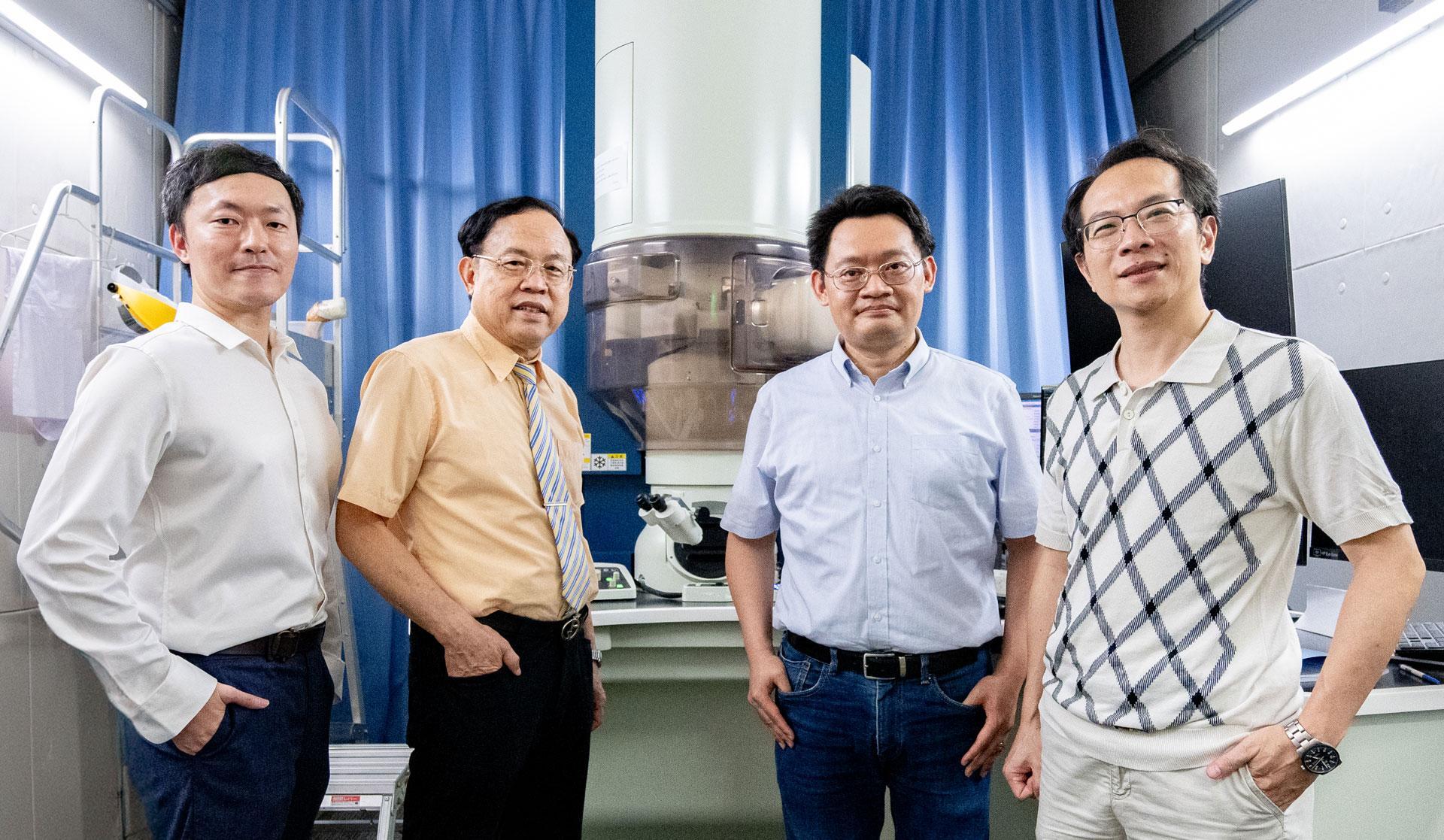
Authors (left to right) of “Clarifying the Four Core Effects of High-entropy Materials”: Wei-Lin Hsu (許瑋麟), Jien-Wei Yeh (葉均蔚), An-Chou Yeh (葉安洲), and Che-Wei Tsai (蔡哲瑋).
A research team led by Distinguished Chair Professor Jien-Wei Yeh (葉均蔚) of the Department of Materials Science and Engineering at National Tsing Hua University (NTHU) in Taiwan, who earlier this year was elected academician of Academia Sinica, has recently published an important article in Nature Review Chemistry titled “Clarifying the Four Core Effects of High-entropy Materials.” In addition to elucidating these four core effects---high-entropy, severe-lattice-distortion, sluggish diffusion, and cocktail effects---the article also clarifies some key points that have long been debated by researchers in this field.
Professor Yeh, who is known as the “Father of high-entropy alloys,” first proposed the theory of high-entropy alloys in a pioneering paper published in 2004. Soon afterwards, a growing number of researchers around the world began to specialize in this emerging field, and the number of related papers has grown exponentially, with an average of ten new papers being published every day.
High-entropy materials in the development of renewable energy
For thousands of years, man-made alloys have been produced by starting with a base of aluminum or magnesium and adding a small amount of some other metal, resulting in improved strength and tenacity. The high entropy theory proposed by Yeh and confirmed by empirical evidence subverted the traditional understanding of alloys. By increasing the level of disorder to produce a high mixing entropy, more than five kinds of metals can be synthesized in equal or non-equal proportions to create a high-entropy alloy which is extremely strong, tenacious, ductile, and resistant to high temperatures and corrosion. Related research is currently being conducted in the US by the Department of Energy, the Oak Ridge National Laboratory, and various branches of the armed forces.
For the past 20 years researchers around the world in the fields of physics, chemistry, materials, machinery, and computational simulation have been researching the potential applications of high-entropy materials and they have developed a variety of high-entropy materials, including alloys, ceramics, and polymers. Yeh sees one of the most promising future applications for high-entropy materials to be as a catalyst in hydrolysis for producing hydrogen in a highly efficient way, which holds much promise for the development of renewable energy.
Yeh also points out that the superior ability of high-entropy materials to resist high levels of heat and radiation make them one of the few materials highly suitable for use in nuclear fusion reactors. An inexhaustible energy source would significantly reduce carbon dioxide emissions and also give a major boost to space travel.
Research supporting the four core effects of high-entropy materials
Yeh cites the example of a research team in Germany that conducted an experiment investigating the sluggish diffusion effect of high-entropy materials, the results of which were inconsistent with his theory. However, Yeh pointed out that the discrepancy was the result of their diffusion coefficient not taking into account the melting points of different materials; by taking the melting points into consideration, the results would become consistent with the sluggish diffusion effect. Indeed, this was later confirmed in a follow-up experiment by the same research team.
In his recent article, Yeh explains in detail the lattice-distortion effect of high-entropy materials. The atoms of different metals combine in an irregular arrangement, but the lattice distortion caused by irradiation is self-correcting, a characteristic which makes high-entropy materials resistant to radiation and high temperatures, making them well suited for applications involving nuclear fusion and radiation in outer space.
Groundbreaking research in high-entropy materials at NTHU
The lead author of “Clarifying the Four Core Effects of High-entropy Materials” was Wei-Lin Hsu (許瑋麟), a postdoctoral researcher in the Department of Materials Science and Engineering under the supervision of Yeh, and the co-authors were professors An-Chou Yeh (葉安洲) and Che-Wei Tsai (蔡哲瑋).
In a list of the top two percent of scientists worldwide published by Stanford University last year, Jien-Wei Yeh (葉均蔚) ranked first in Taiwan in the scientific influence ranking, and ranked second in the world in global materials and applied physics.
In recognition of his outstanding and pioneering contributions to the field of materials research, Yeh was awarded the Outstanding Contribution Award at the 32nd International Materials Research Congress (IMRC) held in Mexico in August of this year. The annual meeting included a special four-day symposium on high entropy, during which a total of 64 papers were presented.
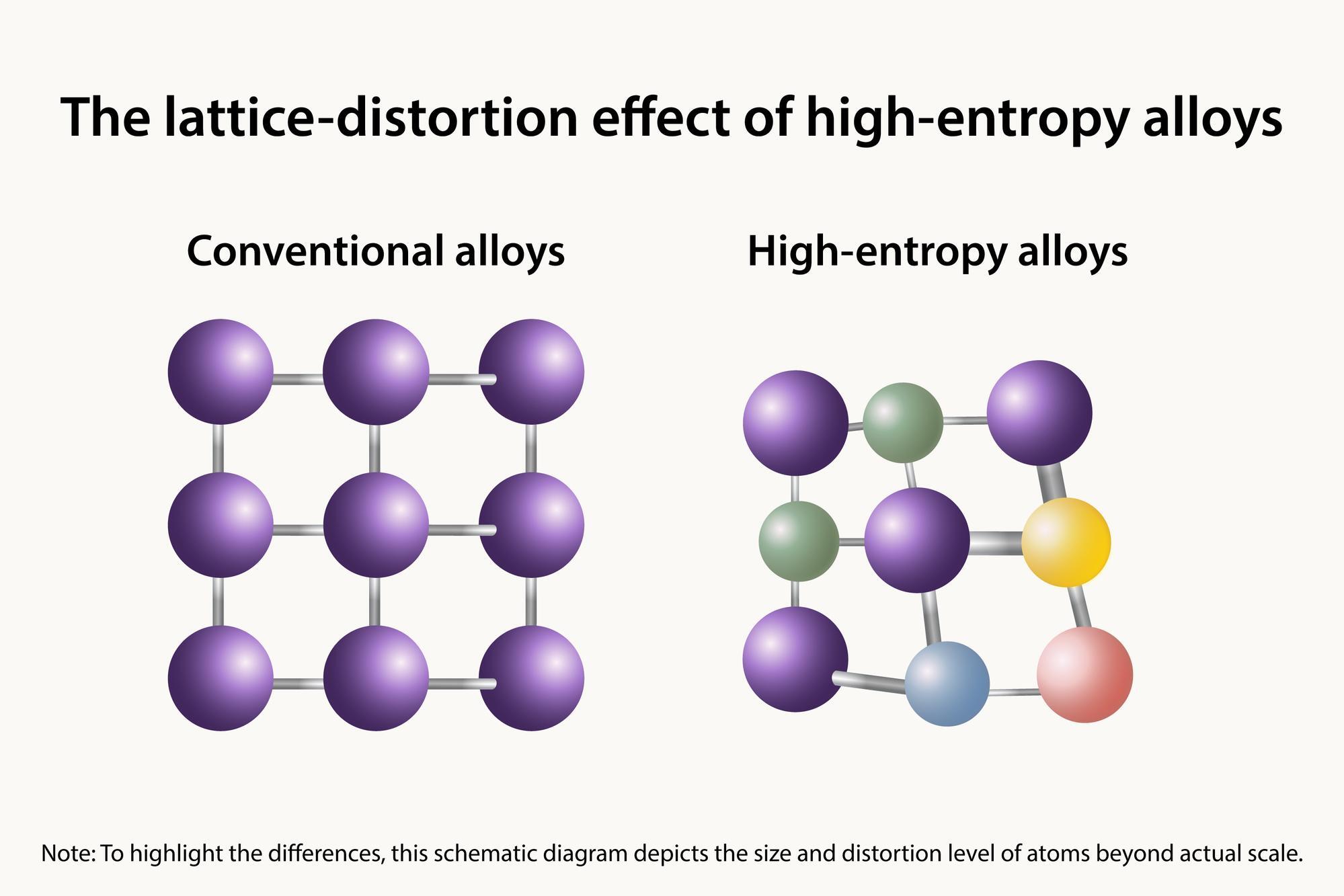
The lattice-distortion effect of high-entropy alloysConventional alloysHigh-entropy alloysNote: To highlight the differences, this schematic diagram depicts the size and distortion level of atoms beyond actual scale.
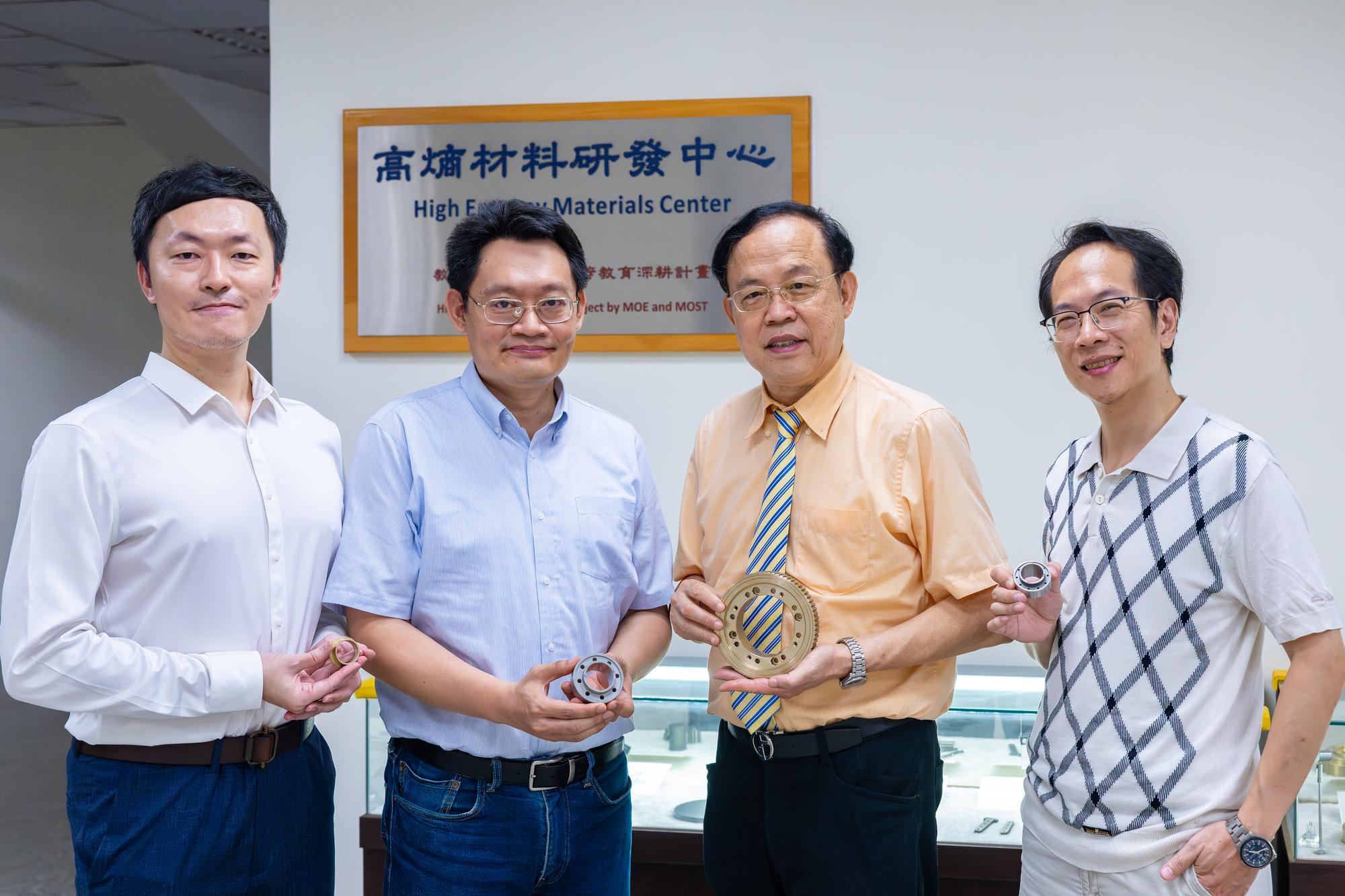
Authors (left to right) of “Clarifying the Four Core Effects of High-entropy Materials”: Wei-Lin Hsu (許瑋麟), An-Chou Yeh (葉安洲), Jien-Wei Yeh (葉均蔚), and Che-Wei Tsai (蔡哲瑋).
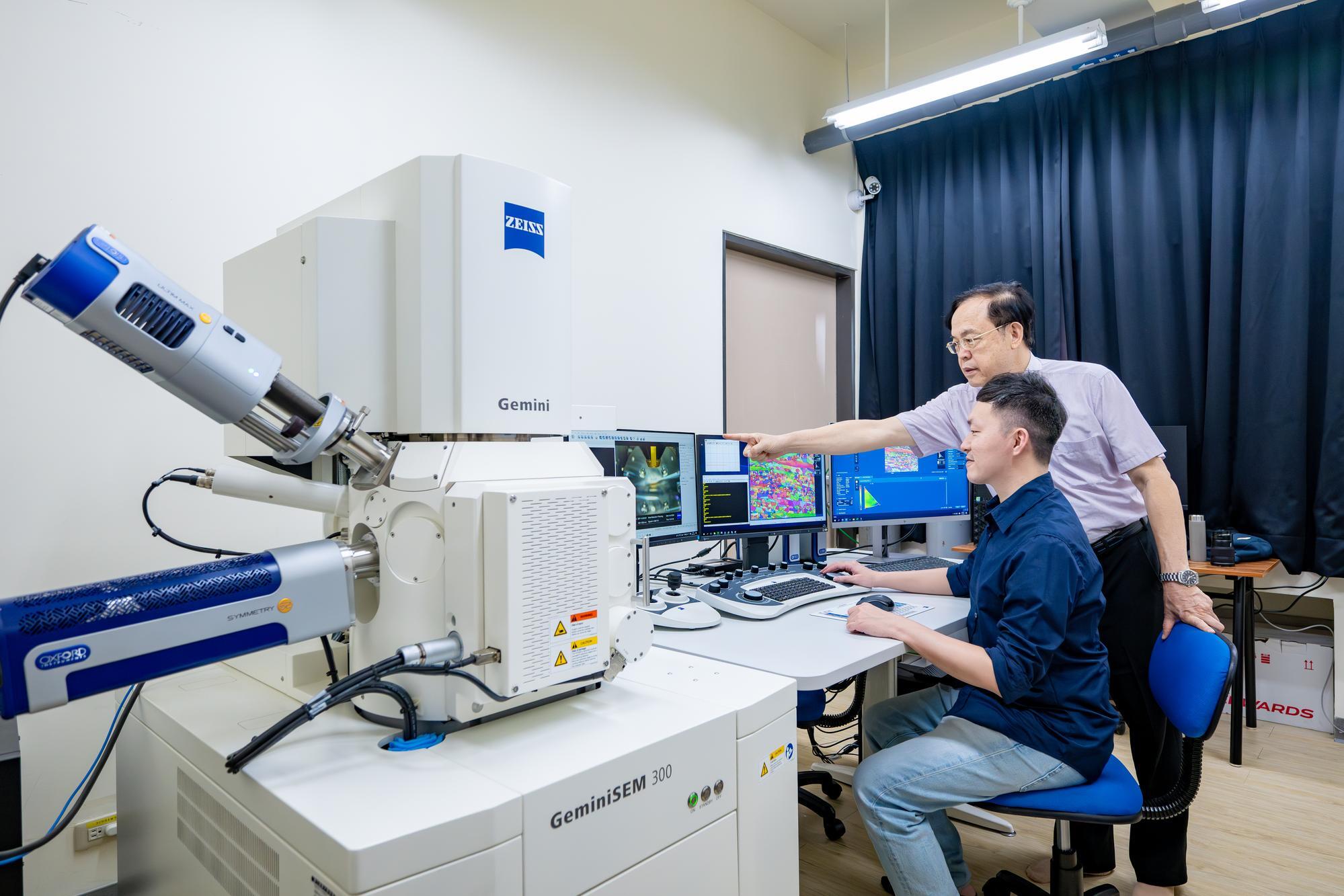
Jien-Wei Yeh (葉均蔚) (rear) showing Wei-Lin Hsu (許瑋麟) how to use a scanning electron microscope to observe the lattice structure of a high-entropy alloy.
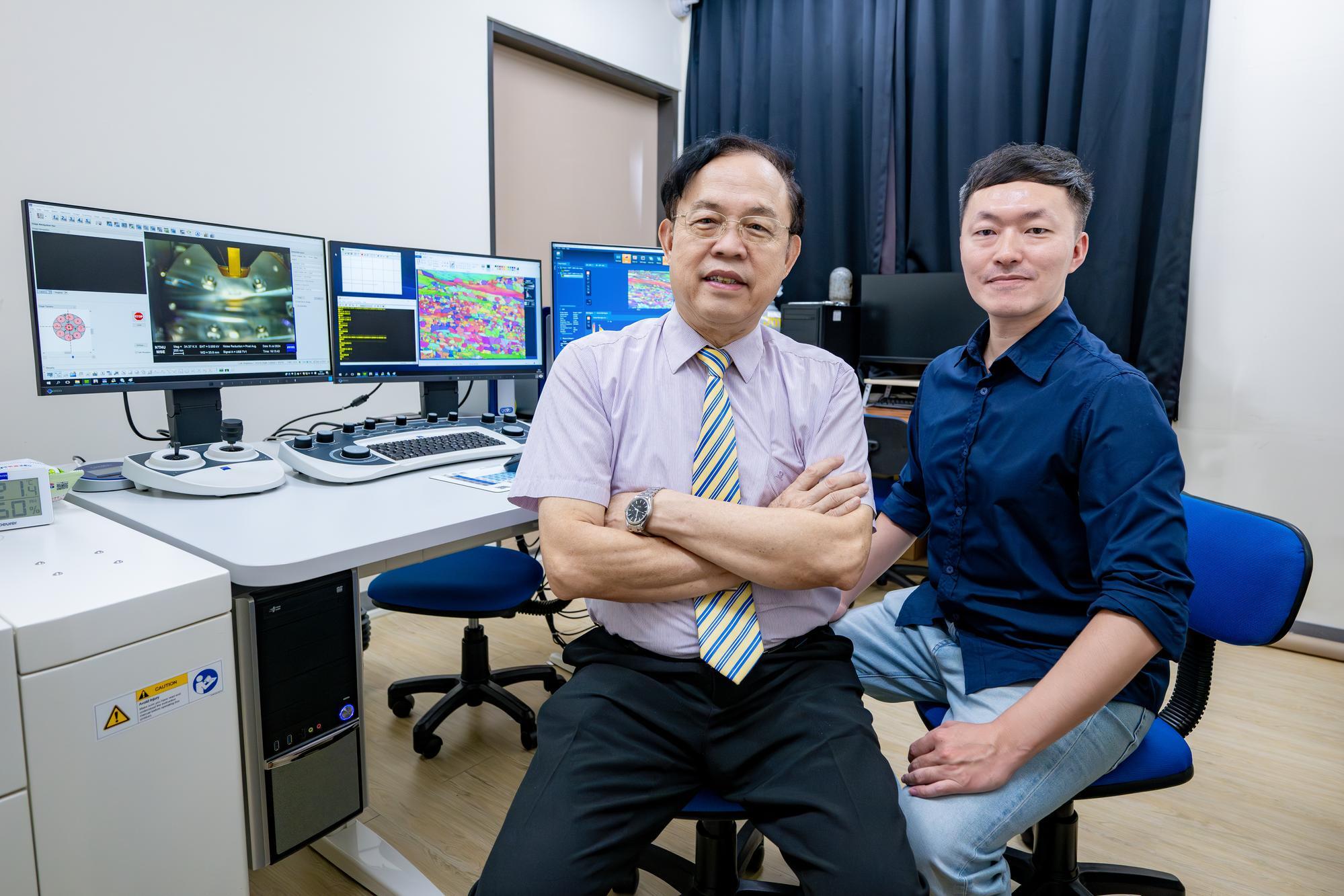
Jien-Wei Yeh (葉均蔚) (left) and Wei-Lin Hsu (許瑋麟) have conducted experiments demonstrating the lattice-distortion effect of high-entropy alloys.

Jien-Wei Yeh (葉均蔚) (right) and Wei-Lin Hsu (許瑋麟) placing a high-entropy alloy inside a scanning electron microscope.
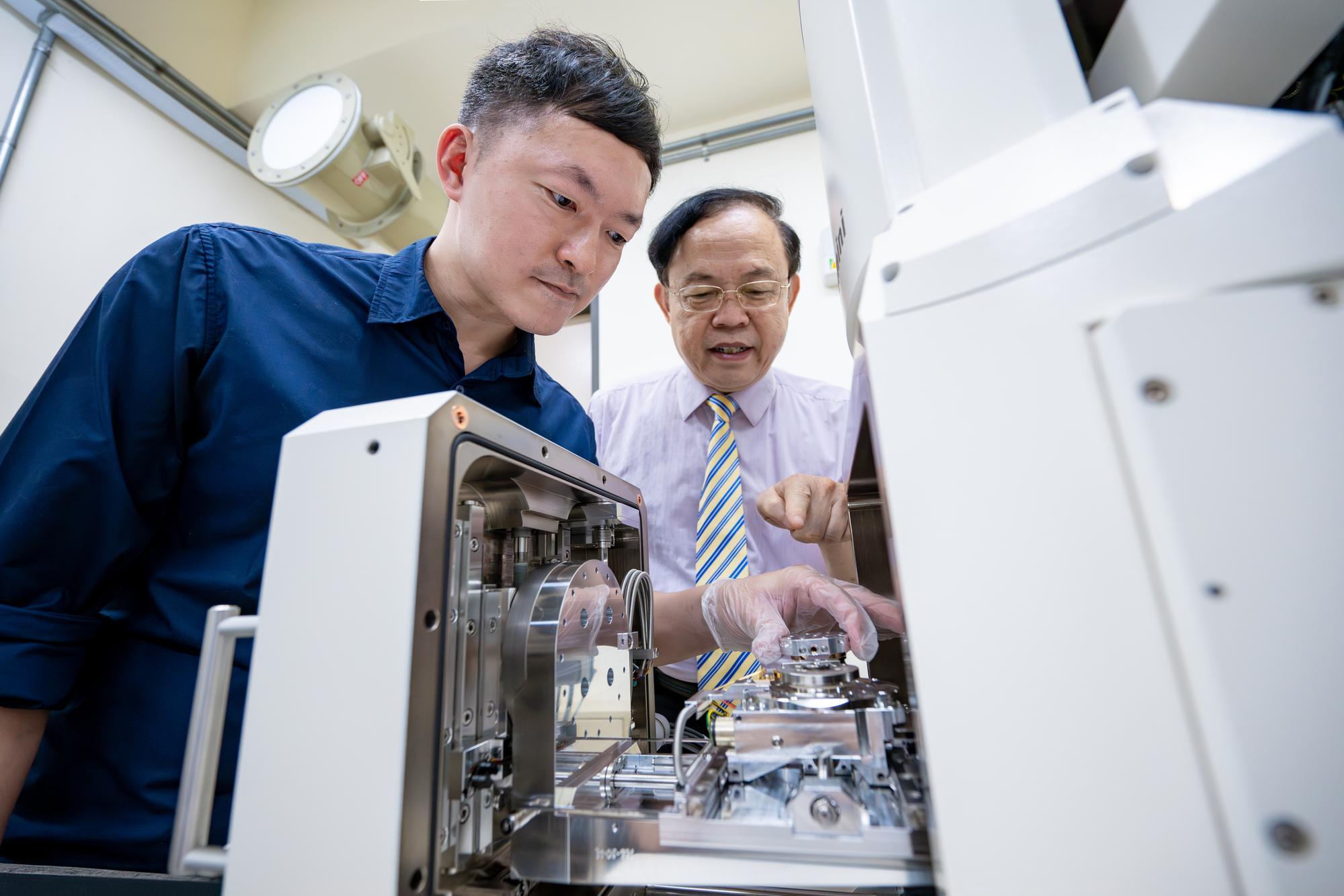
Jien-Wei Yeh (葉均蔚) (right) and Wei-Lin Hsu (許瑋麟) placing a high-entropy alloy inside a scanning electron microscope.
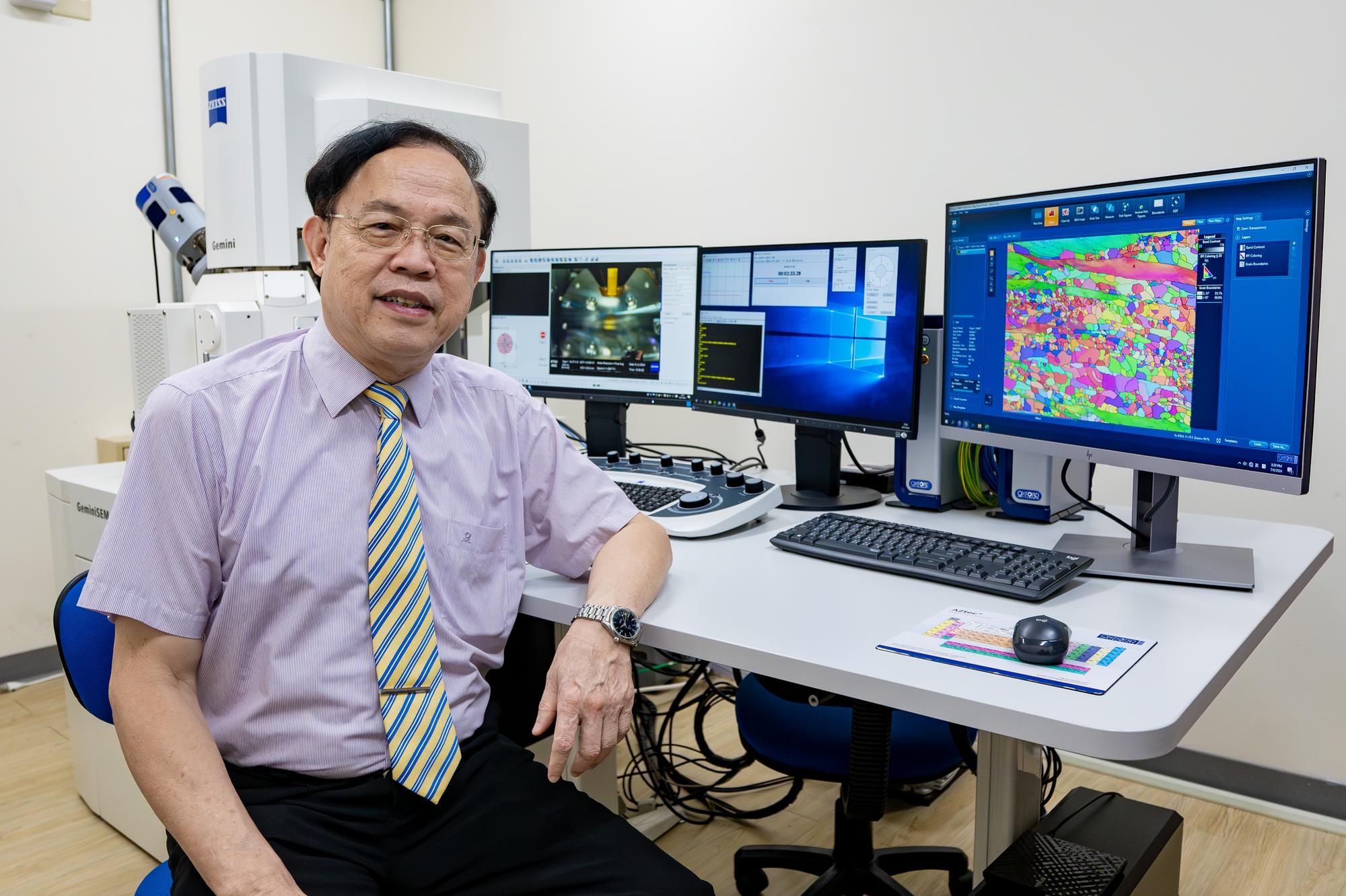
Jien-Wei Yeh (葉均蔚) using a scanning electron microscope to observe how the lattice-distortion effect of a high-entropy alloy affects grain size and distribution.
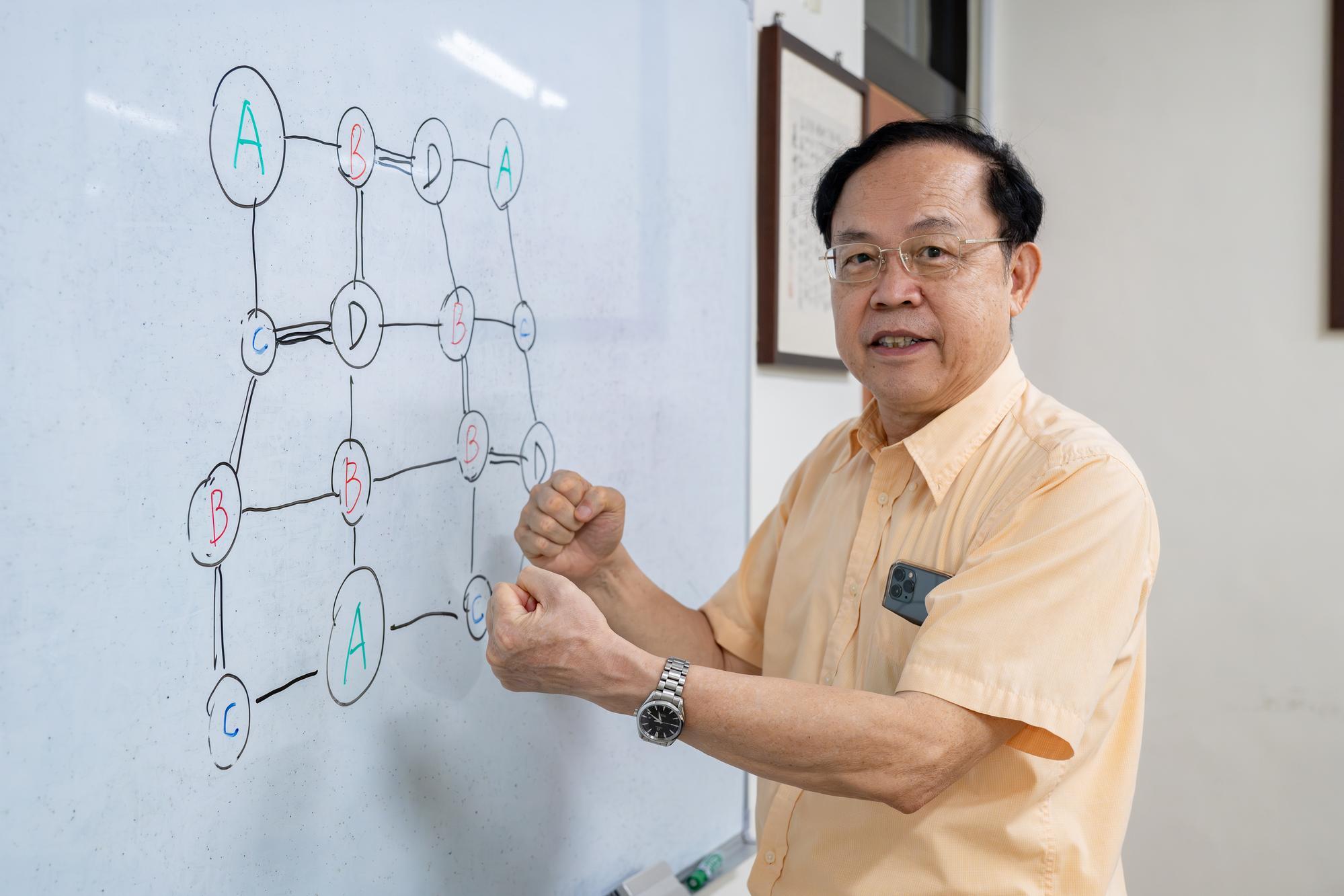
Jien-Wei Yeh (葉均蔚) using a diagram to explain the lattice-distortion effect of a high-entropy alloy.

Jien-Wei Yeh (葉均蔚) placing a high-entropy alloy inside a nanoindenter to test the hardness of the high-entropy film.










